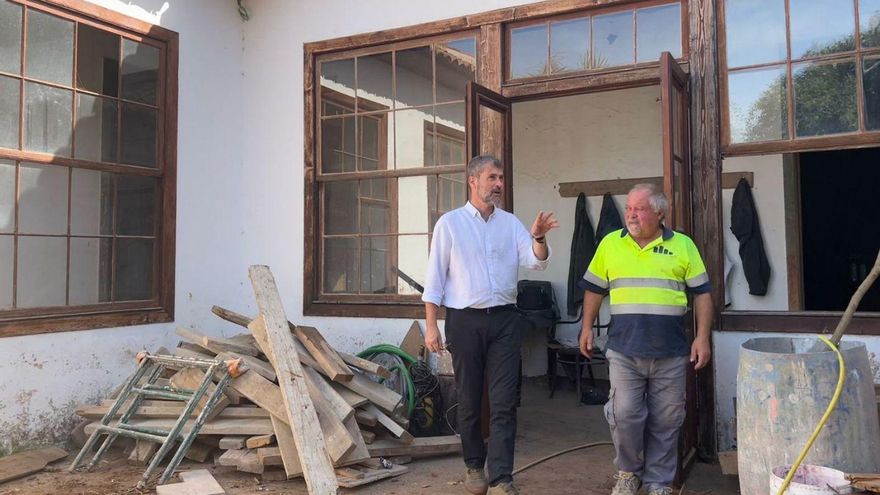
The Agua de Dios ravine, between the municipalities of Tegueste and La Laguna, is one of the three epicenters of archeology in Tenerife, next to the Ladera de Martiánez (Puerto de la Cruz) or the Herques ravine (between Güímar and Fasnia. It housed Guanche settlements that left innumerable remains, most of them lost due to looting. Only the Teguestera part preserves a hundred Guanche sites. To rescue what little remains of this legacy, the Municipality of Tegueste projects the Los Cabezazos Archeology Interpretation Center, as one of the caves in the ravine is called.
The City Council has started rehabilitation works of the building in the surroundings of the Plaza de San Marcos that will house this interpretation center. They are facilities that will highlight the archaeological and heritage value of the ravine. The Councilor for Local Development, Manuel Martín, confirms that the Agua de Dios ravine is “one of the most important archaeological sites in Tenerife” and “a resource with enormous potential for local socioeconomic development.” “The combination of the future Interpretation Center and Archaeological Park will allow citizens to enjoy the visit,” adds the mayor.
The investment for the rehabilitation of the building amounts to 244,815 euros, financed by the Cabildo de Tenerife, and includes the restoration and conservation of the property and its adaptation to the new exhibition and interpretive uses. These works have been the objective of the City Council for years, in which it had progressively taken administrative steps. The ravine, declared an Asset of Cultural Interest (BIC) in 2006, extends for about 4.5 linear kilometers. The Canary Islands Government He describes it as “a permanent settlement unit of great importance in Tenerife, as evidenced by the extraordinary number of cavities that have been documented.” According to the Archaeological Chart of Tegueste and La Laguna, some thirty natural caves have been inventoried in Agua de Dios, both with a residential and funerary function, documenting several not included in said document. Many of them hThey have undergone reuse processes, taking into account the various uses that this space has historically received.
Among the documented sites, some cavities stand out that have been the object of archaeological excavations, such as the famous Los Cabezazos cave, which gives its name to the future interpretation center. The collecting and trafficking of mummies caused serious damage to the ravine. In 2016, after a fire in a house in Tacoronte, the Civil Guard discover in one of the rooms an important archaeological collection. Among the numerous pieces were some in this Tegueste ravine.















